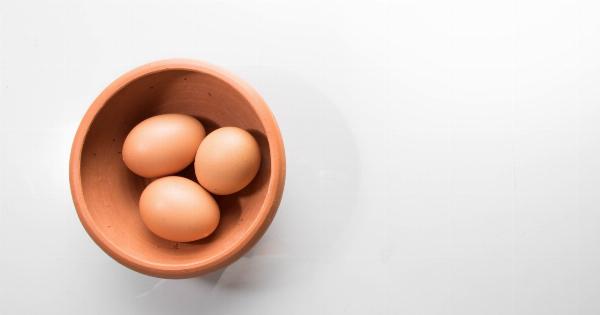As one of the most versatile and nutritious foods, eggs are a staple in many households. However, it’s important to ensure the freshness and safety of eggs before consuming them to avoid any potential health risks.
In this article, we will discuss various methods you can use to check if your eggs have expired.
1. Check the Date
The first and simplest way to determine if your eggs have expired is to check the date on the carton.
Most egg cartons have a “sell-by” or “best-by” date printed on them, indicating the last date by which the eggs should be sold or consumed for optimal freshness. If the date has passed, it’s generally a good idea to discard the eggs.
2. Conduct the Float Test
The float test is a reliable method for determining the freshness of eggs. Fill a bowl or glass with water and gently place an egg into it. If the egg sinks to the bottom and lays flat on its side, it is fresh and safe to consume.
If it stands upright on the bottom, it is still safe to eat but should be consumed soon. However, if the egg floats to the surface, it has likely gone bad and should not be consumed.
3. Perform the Shake Test
Another simple technique is the shake test. Hold the egg close to your ear and gently shake it. If you hear a slight sloshing sound, it indicates that the egg’s contents have started to deteriorate and the egg may not be fresh.
Fresh eggs do not make any sound when shaken.
4. Observe the Shell
Inspecting the shell can also provide valuable information about the freshness of an egg. A fresh egg will have a clean and smooth shell, with no visible cracks or stains.
Any cracks or significant staining could be an indication that the egg has spoiled.
5. Smell the Egg
The smell test is often the most reliable method for identifying spoiled eggs. Fresh eggs should have a neutral odor or a slightly “eggy” smell.
If you detect a strong, unpleasant odor resembling sulfur or ammonia, it is an indication that the egg has gone bad and should be discarded immediately.
6. Examine the Yolk and Egg White
Cracking open the egg and examining the yolk and white can provide further clues about its freshness. A fresh egg will have a bright yellow or orange yolk that stands tall and doesn’t spread out easily.
The egg white should be clear and thick, without any signs of discoloration or unusual textures. Discolored or runny yolks and watery whites may indicate spoilage.
7. Conduct a Candling Test
While the candling test is more commonly used in commercial egg production, it can also be performed at home with a bright light source. Hold the egg up to the light and look for any signs of a developing embryo, blood spots, or other abnormalities.
These may indicate that the egg is not fresh and should be discarded.
8. Use an Egg Analyzer
If you want to take the guesswork out of determining egg freshness, you can invest in an electronic egg analyzer.
These devices use advanced technology to measure the density of the contents inside the egg and provide an accurate assessment of its freshness. However, they are relatively expensive and not commonly found in household kitchens.
9. Follow Proper Storage Practices
To maximize the freshness and shelf life of your eggs, it’s important to store them properly. Keep eggs refrigerated at a temperature below 40°F (4°C), preferably in their original carton to protect them from absorbing odors from other foods.
Always store the eggs with the pointed end facing downward, as this helps to maintain their quality for longer periods.
10. When in Doubt, Discard
If you are unsure about the freshness of an egg, it is always better to err on the side of caution and discard it. Consuming spoiled eggs can lead to foodborne illnesses, such as salmonella.
While most cases are mild, some can be severe, especially for young children, pregnant women, older adults, and individuals with weakened immune systems.
By following these guidelines, you can ensure the eggs you consume are fresh, safe, and delicious.































